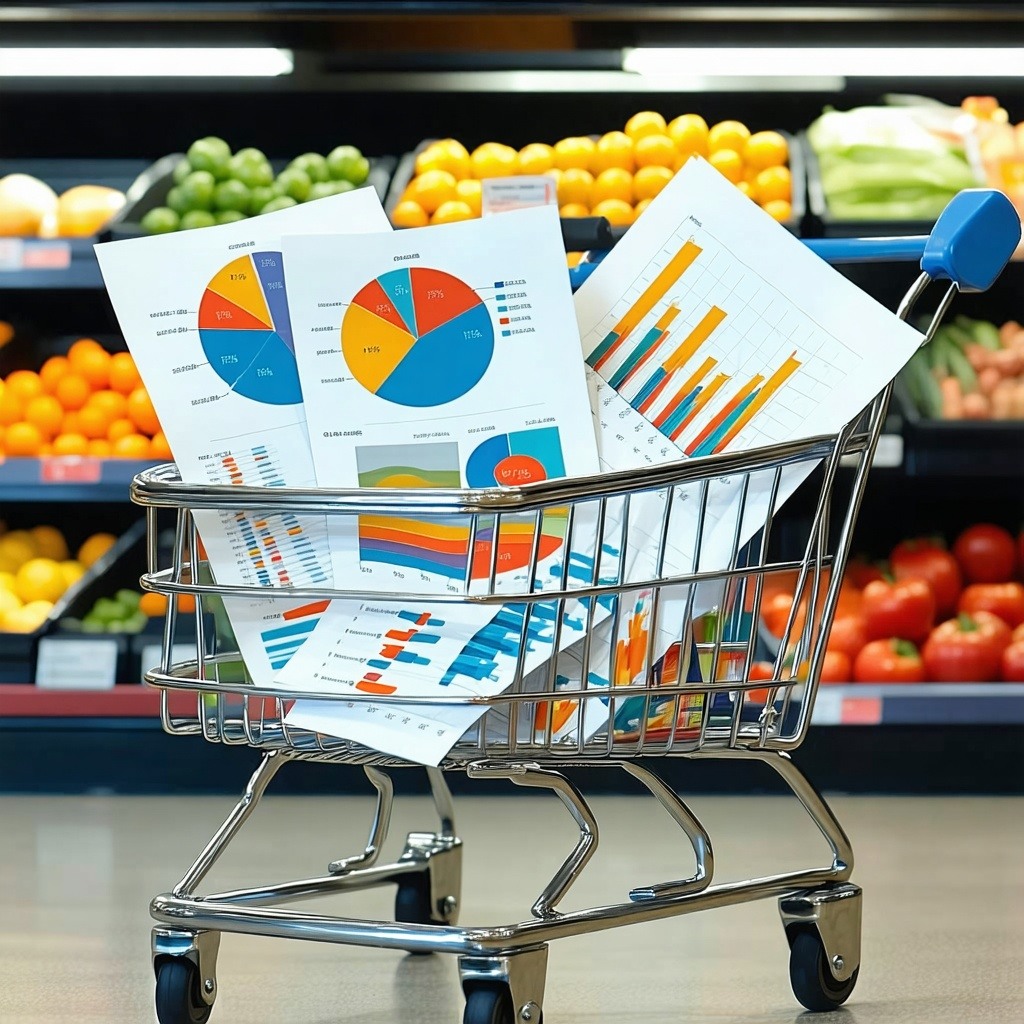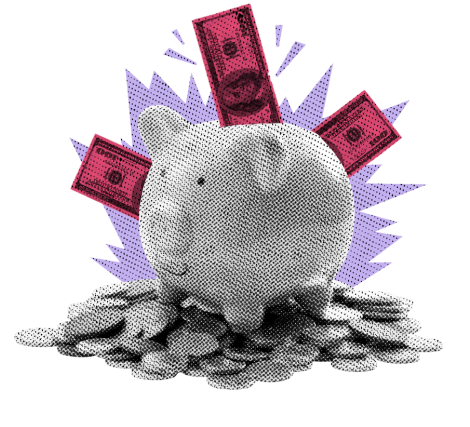
The economy isn’t in crisis, but warning signs are everywhere. Time to pay attention.
KEY TAKEAWAYS
- Daily grocery shopping isn’t just retail therapy—it’s a window into consumer behavior.
- Consumer confidence is slipping, and early economic indicators are flashing warning signs.
- Retail sales growth was weak, with January’s numbers revised downward—biggest monthly drop since 2022.
- Spending at restaurants and auto purchases are trending down—signs of cautious consumers.
- The Atlanta Fed’s GDPNow forecast has worsened, now at -2.056% growth.
MY HOT TAKES
- Grocery carts can be economic indicators if you know what to look for.
- The airport test says the economy is fine—but the data says otherwise.
- Consumer spending is slowing, but a recession isn’t inevitable—yet.
- GDP forecasts and retail sales are trending downward—bad signs if they continue.
- Confidence is key—if people feel secure, the economy holds up.
- You can quote me: "None of these things screams doomsday, but they are certainly signs of economic exhaust worth noting."
Therapy for retail. My long-time followers know of my daily adventures to the grocery store.I have this thing for a daily stop at the store on the way home from work. My days start at <= 3:30 AM and folks, it is a full-on foot race straight through to the closing bell–no water breaks, no lunch, no stretching, just bare-knuckle burning. Once the closing bell tolls, I have 2 hours to get myself ready for civilian life, where I have to interact with family and pets. Then there is the trash that needs to be rolled to curb…when I remember. A big part of that preparation involves shopping for groceries. It’s true, almost daily, you can find me in some suburban grocery store wandering almost aimlessly, recipe in hand, looking for this spice or that veg. I love it. It is a healthy form of retail therapy.
That said, I don’t completely forget about my day job. I am always observing prices, trends, and even what others have in their carts. I know that sounds a bit creepy, but to be clear, if I see someone who has clearly just left a $150 Pilates class, wearing $200 of athletic wear, pushing a cart with a 12-pack of Macarons and a box of hand-picked mochi from the mochi bar at my nameless, over-priced, ritzy grocery store, I can safely deduce that the economy, for at least the specific bracket that frequents my store, is doing ok. Now I know that it is not a realistic representation of the broader economy, but it is a data point, at least.
A more realistic indicator is the airport. A colleague of mine recently flew up to our New York office and the first thing he said was “you should have seen how packed the airport was at 6 AM, filled with folks getting away for a holiday.” He further commented that the economy must be doing just fine. But is it? Really?
Well, there are some signs of wear and tear that should not be overlooked. I have been talking a lot about consumer confidence and how that has been noticeably waning. As recently as last Friday, all the early indicators of sentiment have been flashing warning signals. Also, last month’s read of Personal Spending threw a sharp miss, sending now-casts into the red for the first time since, well, 2022, and before that, pandemic-ridden, early 2020. I have also pointed to last month’s Retail Sales release which posted a markable monthly decline. Yesterday we got Retail Sales for February, which showed a smaller-than-expected increase with a DOWNWARD revision of January’s number. That is not good, and if you look at the following chart of retail sales, you will note that last month’s downward-revised change marked the biggest monthly decline since 2022. Have a look, then keep reading.

When we break down the number, we note that specifically, retail sales of Food Services and Drinking places declined significantly for the month. What’s more is that it's been in a bit of a downtrend since early winter. If you were concerned over your economic safety in the coming months, what is the first thing that you would cut out of your budget? That’s right, and what about big-ticket items such as cars? Purchases of automobiles have been in a bit of a downtrend as well.
Folks, none of these things screams doomsday, but they are certainly signs of economic exhaust worth noting. Going back to that Atlanta GDPNow forecast that really set the alarms a-ringin’ a few weeks ago, it has only gotten worse since. To read more about it, go back to my March 3rd blog post “Consumption is Cracking—And That’s a Big Problem” here. On that day, the GDPNow forecast was at -1.47% and, as of yesterday, it stands at -2.056%.
Ok, ok, I realize that you may not put so much weight on quantitative, econometric forecasts, but perhaps, you might rather hear from a blue-chip economist? If you do, there is good news and bad news. The good news is that a median of leading economists gives only a 25% chance of a recession over the next 12 months. The bad news is that the probability recently ticked up, meaning the probability is increasing. Ok, now, I am not going to leave you on that sour note. Those very same economists are expecting GDP to grow by 2.6% this quarter (median). That is hardly a warning that a recession is imminent.
And I will take it a step further and tell you that none of this portends a recession, but some of the conditions that classify a recession have recently been satisfied. Finally, I want to note that things can change. With that, I will end with a quote from Ebenezer Scrooge from A Christmas Carol. “Men’s courses will foreshadow certain ends, to which, if persevered in, they must lead … But if the courses be departed from, the ends will change.” Scrooge utters this as he realizes that his actions shape his future and is hoping that by changing his ways, he can avoid that which he fears most. Clearly, recession was not his concern, but we may be able to learn something from him. Consumer confidence is paramount in determining consumption, and if consumption remains healthy, so does the economy. What do you suppose could help bolster consumer confidence?
YESTERDAY’S MARKETS
Stocks rallied yesterday on a dip buying frenzy. Stocks wavered earlier in the session on a weaker than expected Retail Sales figure. Traders are hopeful that the Fed will speak softly at tomorrow’s big policy reveal–no hope for policy changes, just supportive talk.

NEXT UP
- Housing Starts (Feb) are expected to have gained by 1.4% after falling by -9.8% in the prior period.
- Building Permits (Feb) may have slipped by -1.4% after declining by -0.6% in January. This is considered a leading indicator for Housing Starts 👆. You have to have a permit to start building 😉
- Industrial Production (Feb) is expected to have increased by 0.2% after a 0.5% increase in January.
.png)

